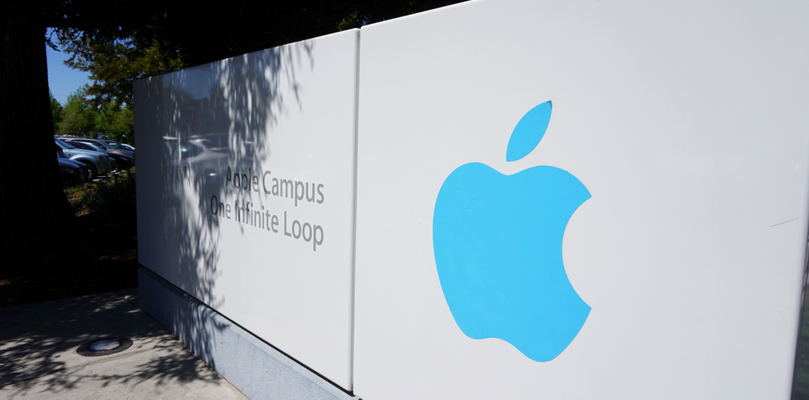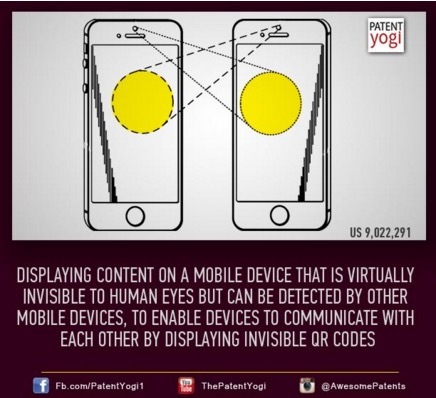5 top-secret Apple patents recently released

When it comes to secrets, Apple can give a head start even the CIA!
Apple is not without reason called the most secretive technology company in America. The information is so vigilantly guarded that even Apple engineers themselves have no idea what their peers are working on.
')
Therefore, it is not surprising that Apple keeps some of its patents secret from prying eyes. Generally, patents must be published within 18 months from the filing date of the application. However, the patent office may delay publication for some reason. Apple is actively using this fact to postpone the publication of certain patents.
It is very difficult to find these secret patents, as their number is small compared to the thousands of patents issued each week. But the PatentYogi patent search team discovered five so secret patents that Apple didn’t want anyone to know about them.
What are these patents? And why did Apple hide these technologies? Let's find out.
Patent name: Apparatus, method and computer program for controlling the target device using instant messages
Publication Number: US 8,996,619

This patent Apple kept in secret for almost a decade. Finally, in March 2015, it was published. The technology allows you to control electronic devices by simply sending instant messages (IM) to them. For example, users can list commands in a message and send it to a target device (let it be a device for playing video at a conference) and control it remotely.
In turn, the target device sends users a response IM with the results or information about the parameters. In fact, this technology allows users to "communicate" with their electronic devices, controlling them. Apparently, Apple decided that it was better not to publicize this patent - as well as “communication” with the devices that this technology provides.
Patent name: Frequency flexible sensory processing
Publication Number: US 8,988,390

In July 2013, Apple filed a patent application called “Frequency Flexible Sensory Processing”. Under normal conditions, this patent was to be made available to the public in December 2014. However, Apple specifically appealed to the US Patent Office with a request not to publish it.
The patent affects one of the key problems of mobile devices: the frequency of the main clock or sync pulses, which is created to control the operation of the touch screen, sometimes interferes with the frequencies of the wireless communication network.
In order to prevent this, the technology described in the patent dynamically changes the clock frequency so that it does not coincide with the frequencies of other mobile devices. Screen sensors and electronic display circuitry are designed so that the device can function normally even if the main clock frequency changes.
The result is a high quality voice and data transmission without any negative impact on the touch screen and the operation of the display device. Since sensory-visual technology occupies a key place in the production line of Apple products, it is not surprising that the company prevented the publication of this technology until March 2015.
Patent name: memory management in combining memory cells through the use of maximum time slots.
Patent Number: US 9,021,181.

It's no secret to anyone that Apple holds several patents in the field of storage devices. But for some reason, the company decided to keep secret certain memory management techniques. This document describes the method of storing data on flash memory in a new way, which reduces the complexity and requirements for free disk space on the part of memory management processes.
This is achieved due to the fact that all data stored in a specific area of memory is recorded at about the same time. As a result, all data undergo identical changes, and it will be easier to manage them at the expense of a smaller number of parameters. Apparently, Apple was planning to delay as long as possible the moment when its main competitor, South Korean company Samsung, which can boast of impressive developments in the field of storage devices, learns about the new technology.
Patent name: Invisible label for transferring data between electronic devices.
Patent Number: US 9,022,291.

Patent name : Invisible label for transferring data between electronic devices.
Patent Number: US 9,022,292.

Finally, two more patents (US 9,022,291, US 9,022,292) are related to invisibility. Both of these documents describe a clever display technique on a mobile device for content that is virtually invisible to the human eye, but can be detected using other mobile devices.
Based on this, devices can interact with each other by displaying invisible QR codes. The technology uses the fact that certain colors (for example, blue and orange) neutralize each other when they are consistently shown so quickly that the human eye is not able to catch them.
This technology, described in these two documents, is unique in its own way, which is why Apple patents have been approved even without demonstrating any prototype. This development is likely to be a technological breakthrough in the electronic industry - it is not surprising that the Apple Corporation kept its developments secret until the last.
The fact of the coming appearance of new technologies only strengthens the value of the apple corporation. Thus, Goldman Sachs, one of the largest investment banks, issued a recommendation for the mandatory purchase of company shares for the following reasons:
- Apple does not make the most of its software assets.
- Potentially, the appearance of package offers (such as Amazon Prime).
- In the future, Apple TV can play a huge role in the development of the market.
- The sales of various devices remains high.
The official release from Goldman Sachs also states that a wise decision from Steve Jobs’s brainchild will be to launch a global service that Apple could use to sell applications, especially using a subscription model for certain periods: “With an extensive database of loyal users currently has more than 500 million people, our company sees significant Apple potential for increasing monetization. ”
Apple currently offers various software services, including Apple Music, Apple Pay, and a long-awaited TV service. According to analysts of the bank, the corporation from Cupertino does not use the opportunities offered by their branded devices - iPhones, iPads, Macs and Apple Watch smart watches.
Source: https://habr.com/ru/post/296466/
All Articles